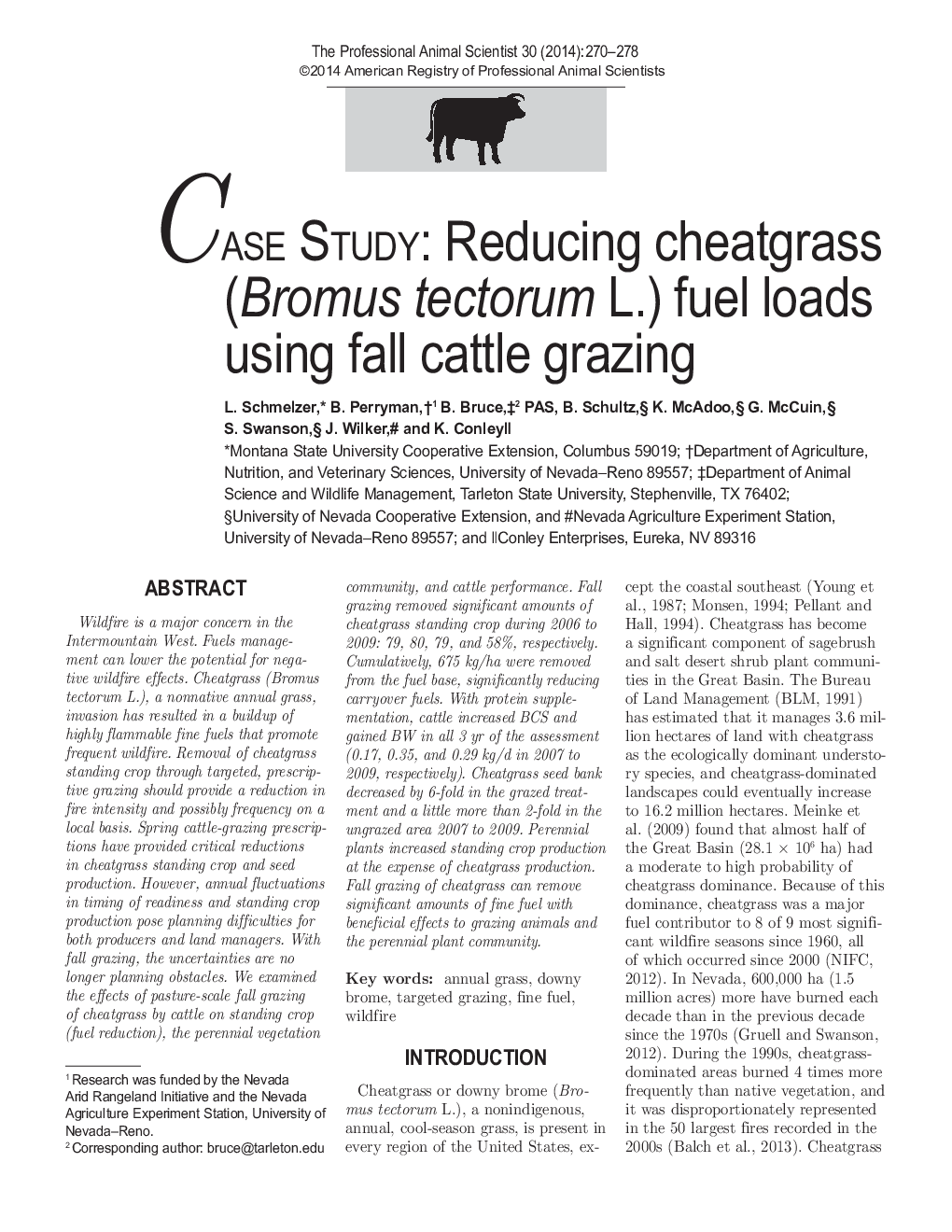| Article ID | Journal | Published Year | Pages | File Type |
|---|---|---|---|---|
| 2453889 | The Professional Animal Scientist | 2014 | 9 Pages |
Abstract
Wildfire is a major concern in the Intermountain West. Fuels management can lower the potential for negative wildfire effects. Cheatgrass (Bromus tectorum L.), a nonnative annual grass, invasion has resulted in a buildup of highly flammable fine fuels that promote frequent wildfire. Removal of cheatgrass standing crop through targeted, prescriptive grazing should provide a reduction in fire intensity and possibly frequency on a local basis. Spring cattle-grazing prescriptions have provided critical reductions in cheatgrass standing crop and seed production. However, annual fluctuations in timing of readiness and standing crop production pose planning difficulties for both producers and land managers. With fall grazing, the uncertainties are no longer planning obstacles. We examined the effects of pasture-scale fall grazing of cheatgrass by cattle on standing crop (fuel reduction), the perennial vegetation community, and cattle performance. Fall grazing removed significant amounts of cheatgrass standing crop during 2006 to 2009: 79, 80, 79, and 58%, respectively. Cumulatively, 675 kg/ha were removed from the fuel base, significantly reducing carryover fuels. With protein supplementation, cattle increased BCS and gained BW in all 3 yr of the assessment (0.17, 0.35, and 0.29 kg/d in 2007 to 2009, respectively). Cheatgrass seed bank decreased by 6-fold in the grazed treatment and a little more than 2-fold in the ungrazed area 2007 to 2009. Perennial plants increased standing crop production at the expense of cheatgrass production. Fall grazing of cheatgrass can remove significant amounts of fine fuel with beneficial effects to grazing animals and the perennial plant community.
Related Topics
Life Sciences
Agricultural and Biological Sciences
Animal Science and Zoology
Authors
L. Schmelzer, B. Perryman, B. PAS, B. Schultz, K. McAdoo, G. McCuin, S. Swanson, J. Wilker, K. Conley,
